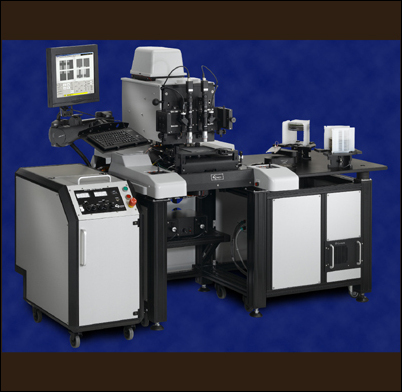Morgan Hill, CA (PRWEB) October 3, 2006
A number of breakthrough applications for employing contact mask aligners have demonstrated the equipments versatility far beyond the production of silicon wafers. Once reserved solely for the building of integrated circuits, contact mask aligners are now used to fabricate cutting edge products, including those that incorporate MEMS (miniature electro-mechanical systems) and microfluidics technology.
Non-traditional industries are now snapping up mask aligners to help produce millions of new products, notes Brett Arnold, President of San Jose, California-based Neutronix, Inc., photolithography specialists providing custom engineered contact/proximity and mirror projection mask aligners.
Arnold’s company, Neutronix, focuses on remanufacturing and custom-engineering Canon PLA 501/600 and MPA 600 series mask aligners. The Canon series has been utilized in semiconductor production for almost 25 years, a remarkable feat when compared to other industrial technologies that are now considered obsolete.
These particular mask aligners are a very robust production tool, and no longer limited to silicon wafers, notes Arnold. Todays new applications represent a good example of the morphing of technology — taking something that was originally intended for one thing and applying it to another to create a new product or even a new market.
Contact mask aligners offer specific advantages for thick-photoresist, micromachining applications where high aspect ratio printing of three-dimensional structures is required to produce these products.
BEI Systron Donner, a division of BEI Technologies, Inc., produces mature MEMS sensors and systems that use its proprietary Quartz Angular Rate Sensor technology for integration into OEM applications that include short-term navigation, guidance and control systems, flight testing, robotics, and vehicle instrumentation. The company’s STD8 Quartz Tuning Fork Sensing Element is manufactured on BEI’s high-volume automotive sensor production line that has produced more than 26 million sensors at a rate in excess of 35,000 per day.
We use Canon PLA 501 proximity aligners for our patterns for the solid state GyroChip(R) sensors because our smallest line-widths are only about 25 microns, so we don’t really need a high end system, says Martin Dewey, pre-production manager for the R&D department of Systron Donner. Although projection aligners could work for us, the capital investment was a little too steep. We believe the Canon machines to be the most cost effective for our purpose.
We considered other suppliers like Karl Suss and Electronic Visions Group but felt that the remanufactured Canon machines from Neutronix were the best value, continues Dewey.
For manufacturers that require equipment that is more current, automated, or capable of handling larger wafer sizes, companies like Quintel Corp. (http://www.quintelcorp.com) offer the latest proximity contact mask aligners at a reasonable cost of ownership.
A Quintel mask aligner is capable of handling wafer sizes of up to 200mm in diameter and providing single and double-sided exposure. The equipment is flexible enough to be modified as needed for new applications that might vary from traditional mask sizes and types, as well as types and thicknesses of substrate.
Today, MEMS and microfluidics device manufacturers stand to gain a competitive edge by utilizing mask aligner technology to create cost advantages as well as technical advances, concludes Arnold.
For further information contact
Andrea Cagnoni
Neutronix, Inc.
Phone (408) 776-5190 ext. 114
Fax (408) 776-1039
http://www.neutronixinc.com
# # #

